| Umělec magazine 2001/4 >> The Beagle Boys Are Here | List of all editions. | ||||||||||||
|
|||||||||||||
The Beagle Boys Are HereUmělec magazine 2001/401.04.2001 David Kulhánek | artist | en cs |
|||||||||||||
|
"Few initiatives in the Czech art scene in recent years have attempted to break past the borders of the communal cottage industry that is the visual arts. Generally speaking, only rarely does Czech art respond to immediate social and political influences; and if it does, the reaction is almost always refined and polite. The activities of the Czech group Rafani (Beagle Boys in English) are intended to change all that. The four members of the group, all students, though not among the youngest generation working here, are pushing back — creatively, with an edge of aggression — against stereotypical mechanisms at place within the art community and society. The group has come up with an audacious plan that consists of mounting to a “powerful position,” propped up by media attention and lucrative financing.
The Beagle Boys emerged as a collective unit for the first time in their November 2000 exhibition at the Fine Arts Academy in Prague. Their masculine determination took the shape of a large painted mural, a group self-portrait, with sleeves rolled up. This was their reputed critical step into the cultural-social ether of Czech society, and its false assertiveness led viewers to believe they would be seeing more work that trod the border between irony and true criticism. Their next action, however, showed true panache, and earned the Beagle Boys the wider media attention they sought: They painted over Prague’s legendary John Lennon wall with dark-green “military” paint. It seems Prague city officials have no trouble tolerating officially sanctioned kitschy slogans and folklore graffiti, but the Beagle Boys were obliged to remove the coat of paint, at their own expense. This work, entitled Láska (Love), could be called a success, if only because the intention was never shallow provocation (perhaps the reason the media frenzy subsided so quickly). The final result is the absurdity of equating a clean wall with one covered in graffiti. One exhibition which was ultimately prohibited was intended for the northern Bohemian village of Bílina. The work was an attempt at dealing with the traumatic history surrounding the expulsion of the Czech-Germans who had inhabited the border region. That this failed the gut test for the local authorities and citizens reveals the level of fear and apprehension that still exists in these areas. Czech-German skeletons in the closet were also dragged into the light of their most recent exhibition, Böhmisch, in which they used caricatures published in the German press at the end of WWII. These two exhibitions are suggestive of the direction the Beagle Boys may be intending to take in the world “outside art.” In August 2001, they put on a visually and artistically strong exhibition called RA – 0001/RA – 0514 at Mánes Gallery. For the opening ceremony the Beagle Boys dressed up in “prisoner” uniforms (like those worn by the thieving dogs who are perpetually on the lam in the Mickey Mouse stories, and from whom they take their name) and showed a large logo of a barking dog. The placement of empty metal racks within the gallery’s functionalist interior made the room appear to swing to its own rhythm around the 514 concrete bricks arranged in military formation on the floor — with each brick containing its very own dead rat. Photo documentation of the animals killed decorated one wall in the gallery. Categorization, archiving and the systematization of data as an effective means of rationally understanding reality, of orienting yourself within the society; the idea of unspecified theory being applied to the structures of social relationships: This is what the Beagle Boys present to their audience, and it makes them like a team of scientists producing some kind of ideological model of the world. The Mánes exhibition resembled a sophisticated mission arriving from a place where the future was being constructed. The diktat of “no compromise” espoused by the Beagle Boys in their exhibitions (Democracy, Eingang Gallery, Ostrava; Indentikit, Školská 28, Prague) hearkens back to the “totalitarian” esthetics of Neue Slowenische Kunst (represented by the group Irwin, among others). That approach was deeply rooted in the 1980s and grew out of a strong cultural platform with a sound theoretical background. In contrast to such a “structure,” the Beagle Boy formula is an isolated gesture on the edge between fiction and specific involvement. Beagle Boy “propaganda” also includes proclamations in the form of condensed texts with an intellectual slant. These texts and their opening speeches tend to evoke an impression of determination, a strong stance, though occasionally they feel like sample affirmations from a course in social assertion. Ultimately, however, the activities of the Beagle Boys are still fixed in the artistic sphere; they are linked to an environment they are comfortable with, and it provides them enough fodder to play with. Only the future will show to what extent they are able to stick to their methods of exhibiting and working in the visual arts, or to what extent they might become more aggressively involved in the outside world. The group apparently has every intention of entering the real stage of “topical issues,” financially secure and with naked enthusiasm. But within the Czech art scene, the Beagle Boys will first have to confront Podebal’s more exclusive, designer approach, which, for these Boys, shouldn’t be all that difficult. The Beagle Boys are Luděk Rathouský, Radim Kořínek, Petr Motejzík, and Marek Meduna. Their website, www.rafani.cz, is comprehensive and regularly updated. "
01.04.2001
Recommended articles
|
|||||||||||||
|
04.02.2020 10:17
Letošní 50. ročník Art Basel přilákal celkem 93 000 návštěvníků a sběratelů z 80 zemí světa. 290 prémiových galerií představilo umělecká díla od počátku 20. století až po současnost. Hlavní sektor přehlídky, tradičně v prvním patře výstavního prostoru, představil 232 předních galerií z celého světa nabízející umění nejvyšší kvality. Veletrh ukázal vzestupný trend prodeje prostřednictvím galerií jak soukromým sbírkám, tak i institucím. Kromě hlavního veletrhu stály za návštěvu i ty přidružené: Volta, Liste a Photo Basel, k tomu doprovodné programy a výstavy v místních institucích, které kvalitou daleko přesahují hranice města tj. Kunsthalle Basel, Kunstmuseum, Tinguely muzeum nebo Fondation Beyeler.
|







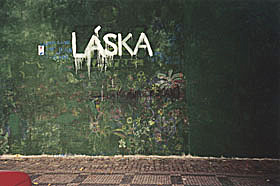
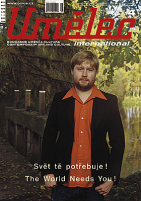











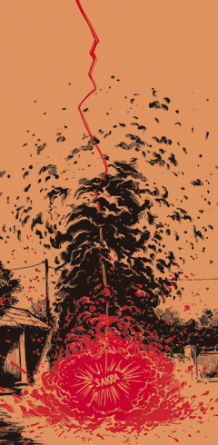











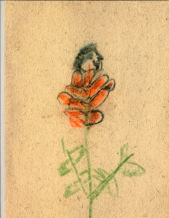
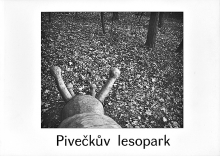

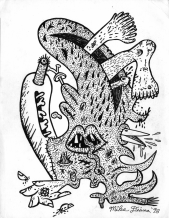


 We Are Rising National Gallery For You! Go to Kyjov by Krásná Lípa no.37.
We Are Rising National Gallery For You! Go to Kyjov by Krásná Lípa no.37.
Comments
There are currently no comments.Add new comment